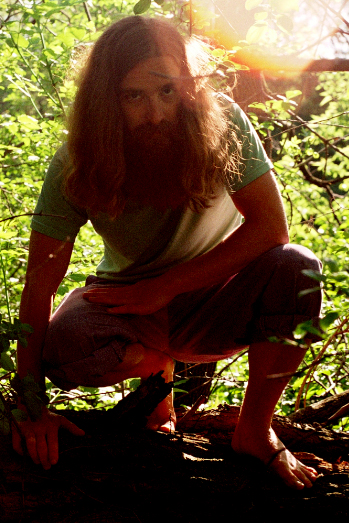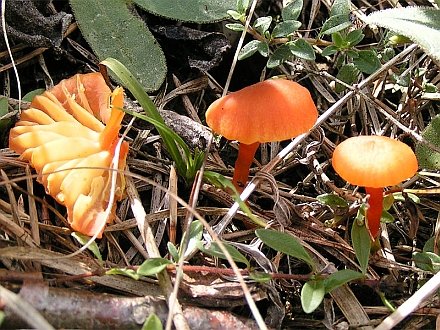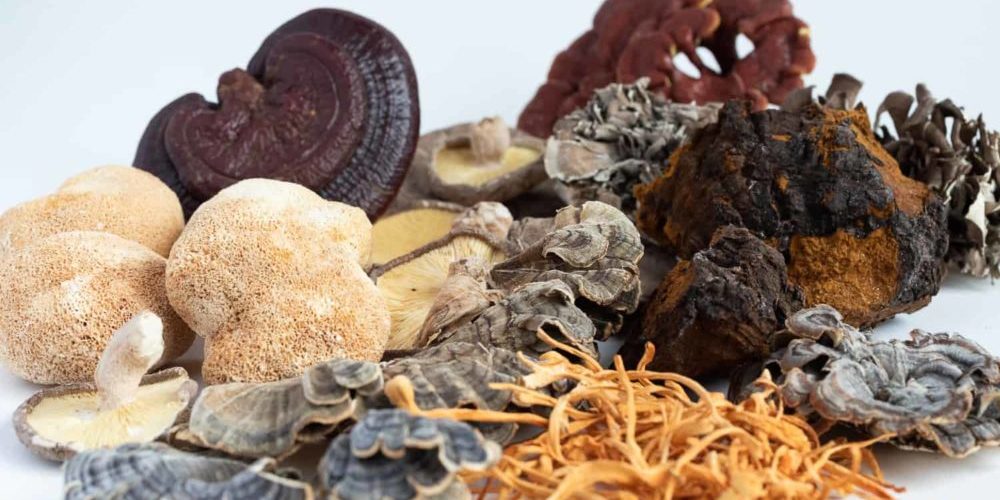The waxycap Hygrocybe marchii (Bres.) Singer.
Classification
Kingdom Fungi
Phylum Basidiomycota
Class Basidiomycetes
Order Agaricales
Family Tricholomataceae
Genus Hygrocybe
Synonyms
Hygrocybe coccinea var. marchii (Bres.) Krieglst.
in Krieglsteiner, Ahnert, Endt, Enderle & Ostrow, Beitr. Kenntn. Pilze Mitteleur. 13: 31 (2000)
Hygrophorus marchii Bres.
Iconographia Mycologica 7: pl. 343 (1928)
Pseudohygrocybe marchii (Bres.) Kovalenko
Mikol. Fitopatol. 22(3): 208 (1988)
Common names
Waxy cap
Hygrophore de March (French)
Kerbrandiger Orangesaftling (German)
Aranysárga nedűgomba (Hungarian)
Description
Cap: 2-4 cm diameter, red or orange-yellow, convex, becoming flattened or centrally depressed in age; radially fibrillose; flesh yellow.
Stem: 3-6 cm tall x 0.3-0.6 cm diameter; orange-yellow, more pallid towards the base; flesh yellow and stuffed.
Gills: adnate to decurrent, broad, distant; pallid when young, becoming more orange in age, yellowish at the edges.
Spores: hyaline, smooth, ellipsoid, non-amyloid, 6-10 x 4-6 µm.
Spore print: white.
Odor and taste: not distinctive.
Edibility: inedible.
Habitat: found in small troops among short grass; late summer to fall; uncommon.
Medicinal properties
Antitumor effects
Polysaccharides extracted from the mycelial culture of H. marchii and administered intraperitoneally into white mice at a dosage of 300 mg/kg inhibited the growth of Sarcoma 180 and Ehrlich solid cancers by 90% and 100%, respectively (Ohtsuka et al., 1973).

My name is Austin Collins.
I've dedicated my life to Mushrooms.
I believe Mushrooms are the best kept secret when it comes to health and well being.
For that reason, I would like to share a company with you that in my opinion makes the best mushroom products on the market.
The company is called Noomadic Herbals, my favorite supplement they make is called "Mushroom Total".
I take their products every day and they have helped me think better and have more energy. Give them a try.
-Austin
References
Ohtsuka S, Ueno S, Yoshikumi C, Hirose F, Ohmura Y, Wada T, Fujii T, Takahashi E.
Polysaccharides having an anticarcinogenic effect and a method of producing them from species of Basidiomycetes.
UK Patent 1331513, 26 September 1973.



